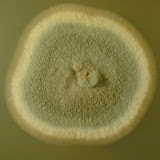Presented Feburary 22, 2008 at the American Academy of Forensic Sciences, Sick Building Symposium. By Edward A. Sobek, Ph.D.
The goal of this presentation is to provide the audience with a set of guidelines to follow to ensure an accurate assessment of fungal contamination when using Mold Specific Quantitative Polymerase Chain Reaction (MSQPCR) and the Environmental Relative Moldiness Index (ERMI), to educate the audience to the many benefits that MSQPCR and ERMI analysis provide over standard assessment methodologies and to inform the audience of the potential pitfalls associated with MSQPCR data interpretation. ERMI and MSQPCR analysis hold the potential of becoming the standard for mold detection in the United States. This presentation will impact the forensic science community by showing the annual medical costs incurred by asthma patients suffering from mold-related symptoms are estimated to cost 3.8 billion dollars annually. Much of the suffering and expense can be foregone, if the focus of treatment shifts from patient treatment to treating the source, which in most cases, can be found in our homes, schools and offices. MSQPCR or mold specific quantitative PCR is a highly accurate and sensitive molecular technique for the detection and quantification of molds. The assay was developed by the U.S. E.P.A. in response to the ever increasing mold problems associated with homes and buildings in the United States. MSQPCR, which is a variation of quantitative PCR, provides the input data from which the ERMI score is derived. The ERMI score is used to determine how a home ranks on a National Scale in terms of mold burden. ERMI, while a relatively new tool, is rapidly gaining a stronghold as the gold-standard for mold detection in homes and building. Herein, several case studies will be reviewed; each serving as a testament to the power of ERMI and MSQPCR in the field of building forensics and indoor air quality. In each study, MSQPCR was used to identify fungal contamination, or lack thereof, in a variety of indoor environments. The ERMI indices derived from MSQPCR data will be presented. Moreover, an in-depth examination of data interpretation will be explored, from laboratory to the final site assessment and recommendation. The winding path called "data interpretation" will be decomposed to, 1) describe the methodologies to ensure an accurate assessment of fungal contamination, 2) highlight the scientific inquiry required to compose a compelling and highly accurate assessment, and 3) determine the level, complexity, and potential health effects, to occupants, exposed to fungal contamination, in the indoor environment.
The goal of this presentation is to provide the audience with a set of guidelines to follow to ensure an accurate assessment of fungal contamination when using Mold Specific Quantitative Polymerase Chain Reaction (MSQPCR) and the Environmental Relative Moldiness Index (ERMI), to educate the audience to the many benefits that MSQPCR and ERMI analysis provide over standard assessment methodologies and to inform the audience of the potential pitfalls associated with MSQPCR data interpretation. ERMI and MSQPCR analysis hold the potential of becoming the standard for mold detection in the United States. This presentation will impact the forensic science community by showing the annual medical costs incurred by asthma patients suffering from mold-related symptoms are estimated to cost 3.8 billion dollars annually. Much of the suffering and expense can be foregone, if the focus of treatment shifts from patient treatment to treating the source, which in most cases, can be found in our homes, schools and offices. MSQPCR or mold specific quantitative PCR is a highly accurate and sensitive molecular technique for the detection and quantification of molds. The assay was developed by the U.S. E.P.A. in response to the ever increasing mold problems associated with homes and buildings in the United States. MSQPCR, which is a variation of quantitative PCR, provides the input data from which the ERMI score is derived. The ERMI score is used to determine how a home ranks on a National Scale in terms of mold burden. ERMI, while a relatively new tool, is rapidly gaining a stronghold as the gold-standard for mold detection in homes and building. Herein, several case studies will be reviewed; each serving as a testament to the power of ERMI and MSQPCR in the field of building forensics and indoor air quality. In each study, MSQPCR was used to identify fungal contamination, or lack thereof, in a variety of indoor environments. The ERMI indices derived from MSQPCR data will be presented. Moreover, an in-depth examination of data interpretation will be explored, from laboratory to the final site assessment and recommendation. The winding path called "data interpretation" will be decomposed to, 1) describe the methodologies to ensure an accurate assessment of fungal contamination, 2) highlight the scientific inquiry required to compose a compelling and highly accurate assessment, and 3) determine the level, complexity, and potential health effects, to occupants, exposed to fungal contamination, in the indoor environment.
